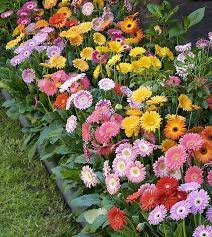**Marigolds in Landscape Architecture and Garden Design**

Marigolds, with their vibrant colors, lush foliage, and versatility, have become prized elements in landscape architecture and garden design around the world. From formal gardens to informal landscapes, marigolds add visual interest, fragrance, and ecological benefits to outdoor spaces, making them popular choices for both professional designers and home gardeners. In this comprehensive guide, we’ll explore the diverse ways in which marigolds are utilized in landscape architecture and garden design, from their aesthetic appeal to their functional benefits and ecological value.
**1. Aesthetic Appeal:**
One of the primary reasons marigolds are favored in landscape architecture and garden design is their aesthetic appeal. With their vibrant hues of yellow, orange, and gold, marigolds add pops of color and visual interest to garden beds, borders, and containers. Whether used as focal points, accents, or mass plantings, marigolds create dynamic and eye-catching displays that enhance the overall beauty and appeal of outdoor spaces.
In addition to their colorful blooms, marigolds are valued for their lush foliage, which provides texture, contrast, and structure to garden compositions. The feathery leaves and bushy growth habit of marigold plants create a sense of fullness and abundance, filling in gaps and softening hard edges in landscape designs.
**2. Seasonal Interest:**
Marigolds are prized for their long-lasting blooms, which provide continuous color and interest throughout the growing season. From early spring to late fall, marigolds grace gardens with their cheerful flowers, adding brightness and vitality to outdoor environments. Their extended flowering period makes them valuable components in seasonal plantings, where they can be used to create visually stunning displays that evolve and change over time.
Furthermore, marigolds are versatile in their adaptability to different climates and growing conditions, making them suitable for use in a wide range of landscapes, from temperate gardens to arid desert environments. Whether grown as annuals or perennials, marigolds thrive in sunny locations with well-drained soil, making them ideal choices for gardens, parks, and urban landscapes.
**3. Companion Planting and Pest Control:**
In addition to their ornamental value, marigolds offer practical benefits in landscape architecture and garden design, particularly when used as companion plants for vegetables, herbs, and ornamental crops. Marigolds emit natural compounds called allelochemicals, which repel harmful pests such as nematodes, aphids, and whiteflies, making them effective allies in organic pest management.
By interplanting marigolds with susceptible crops, gardeners can reduce the incidence of pest infestations and minimize the need for chemical pesticides, promoting a healthier and more sustainable gardening environment. Additionally, marigolds attract beneficial insects such as ladybugs and hoverflies, which prey on pest species and contribute to biological pest control in garden ecosystems.
**4. Cultural and Symbolic Significance:**
Marigolds hold cultural and symbolic significance in many cultures and traditions around the world, making them meaningful additions to landscape designs and garden compositions. In Mexican culture, marigolds are associated with Dia de los Muertos (Day of the Dead) celebrations, where they are used to adorn altars, gravesites, and public spaces to honor deceased loved ones and guide their spirits back to the earthly realm.
Similarly, marigolds are valued for their auspicious symbolism in Hinduism, where they are associated with the goddess Lakshmi and used in religious ceremonies and festivals to invoke prosperity, abundance, and divine blessings. In garden designs influenced by these cultural traditions, marigolds may be incorporated as symbolic elements that evoke spiritual connections, cultural heritage, and collective memories.
**5. Edible and Medicinal Uses:**
While primarily grown for their ornamental value, marigolds have edible and medicinal properties that add functional diversity to landscape designs and garden layouts. The petals of certain marigold species are edible and can be used to add color and flavor to salads, soups, and desserts, providing a culinary twist to garden harvests.
Additionally, marigolds have a long history of use in traditional medicine for their anti-inflammatory, antimicrobial, and wound-healing properties. Marigold extracts and essential oils are prized for their medicinal benefits and may be used topically to treat skin irritations, minor wounds, and insect bites, adding practical value to garden landscapes.
**Conclusion:**
In conclusion, marigolds are invaluable elements in landscape architecture and garden design, offering a unique combination of aesthetic appeal, functional benefits, and cultural significance. Whether used for their vibrant blooms, practical pest control properties, or symbolic meanings, marigolds contribute to the beauty, diversity, and ecological balance of outdoor spaces. As landscape designers and gardeners continue to explore the creative possibilities of marigolds in their designs, these versatile plants will remain beloved favorites in gardens, parks, and public landscapes for years to come.


